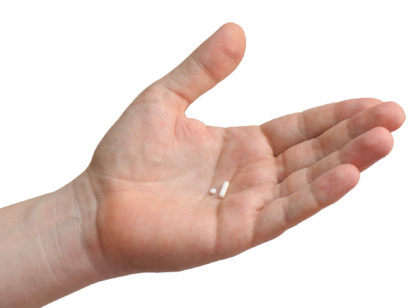In my practice, I often encounter post-menopausal clients that are referred for recurrent urinary tract infections. While on some occasions, physically identifiable ailments account for these issues, more commonly, they suffer from a hidden condition named vaginal atrophy which is often ignored or not recognized by patients and/or their physicians. The goal of this article is to introduce this often ignored condition and allow the audience to understand and address this important health epidemic.
Vaginal atrophy affects 75% of postmenopausal women; only 25% of symptomatic women seek medical care. By the time they do, greater than 50% of women develop dyspareunia (painful sexual encounter) and greater than 40% develop recurrent urinary tract infections. Pathophysiology is due to lack of adequate amounts of estrogen in the vaginal, labial and vulvar tissues which leads to the breakdown of collagen and elastin, decreased smooth muscle tone in the vaginal canal, and diminished blood flow which increases the vaginal pH and ultimately weakens the immune system. This sequence of events allows the normal vaginal bacterial flora which normally protects against infections to diminish giving rise to opportunistic pathogens. Symptoms often include dryness, itching, burning, vulvar pain and dyspareunia.
The use of topical estrogen is a simple solution. With proper use and time, estrogen can virtually regenerate and rejuvenate vaginal tone, integrity, immune system effectiveness and vaginal suppleness. And it can be started at any age.
Unfortunately, there are a lot of unnecessary fears and misconceptions about the use of estrogen. When I mention estrogen to my clients, I am often confronted with fearful statements such as, “I heard estrogen causes breast cancer” or “My mother had breast cancer; I was told that I should not be on estrogen.” When I investigate further, I find that at times, it is their doctor, gynecologist or oncologist advising them accordingly.
Evidence-based medicine has shown that these myths are simply not true. In 2002, the Women’s Health Initiative (WHI) study was first published suggesting these fears. Since then, over 160 further studies have been done which have refuted these concerns: women who had initiated hormone replacement therapy using conjugated estrogen plus progesterone (HRT) at 50-59 years of age had no increase in cardiovascular disease (CVD), breast cancer, or stroke; estrogen-only groups in the same age category showed significantly lower rates of CVD and breast cancer and no increase in rate of stroke; women 60-69 years of age had lower rates of breast cancer and CVD compared with the control group; overall outcomes in women 70-79 years of age showed no increase in rates of breast cancer. While these risks increased with age, data does not support estrogen causing breast cancer.
A follow-up study on WHI published in 2012 and confirmed by the National Cancer Institute stated that (while unknown mechanism) estrogen alone actually decreased risk for breast cancer.
Publisher’s Note: Vaginal estrogen creams come in both animal and plant-based products. We recommend that you research your options and please choose ethically.
Dr. Ilbeigi is Medical Director of Valley Urologic Medical Group/Urologic Institute Center for Female Pelvic Medicine & Surgery and can be reached at (760) 346.3436. He is also a member of Desert Doctors. For more information visit www.DesertDoctors.org.













































Comments (0)